Starting this month in San Francisco, retailers are required to list the Specific Absorption Rate of all mobile phones they sell. The city is the first locality in the United States to have such a requirement.
Here are the key points of the new ordinance that was signed into law last July:
- The Specific Absorption Rate or SAR must be listed on a 1.00” x 1.62” minimum label, with the SAR value in Arial 11-point type or larger
- Optionally, retailers can post an 8.50” x 11.00” or larger sign that lists SAR values for the phones they carry
- Effective date is February 1, 2011
- Fines for non-compliance start at $300USD
A cell phone’s SAR is a measure of the amount of radio frequency (RF) energy absorbed by the body when using the handset. The SAR value is determined by Specific Absorption Rate testing, as conducted by MET Labs and other test labs.
The Federal Communications Commission (FCC) mandates that all cell phones sold in the U.S. must not exceed a SAR level of 1.6 W/kg¹ for 1-g volume-averaged. Canada and Australia have the same limit, while Europe is more liberal, with a cap of 2 W/kg¹ for 10-g volume-averaged.
Some studies have shown that RF even at these levels increases the risk of brain cancer, but the evidence is far from conclusive.
Since the San Francisco legislation, and subsequent CTIA lawsuit to reverse it, industry observers have wondered whether the leftist city has started a trend, or is an anomaly. Then came word this week that an Oregon senator introduced a bill on Monday that would require warning labels on cell phones and wireless device packaging in that state.
Time will tell whether it will die like other initiatives in Maine, other California cities, and on the federal level, but one thing is for sure: The CTIA Wireless 2011 tradeshow won’t be held in San Francisco this year. The wireless industry group has vowed to boycott the city for major events until the cell phone labeling law is reversed.
